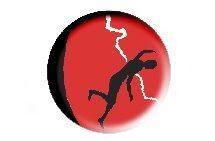
A forty-year old man who had a recurrent dream about a rat gnawing in the lower part of his abdomen was eventually diagnosed as having a duodenal ulcer. After a successful operation for the ulcer, this dream no longer occurred.
Our Dreaming Mind, Robert Van de Castle, Ph.D. p368 (Citing E. Mitchell, "The Physiological Diagnostic Dream, New York Medical Journal 118, 1923, p417)
________________
.________
Physical health appeared to be the most frequently incorporated waking life characteristic in people’s dreams. Those with lower levels of physical health and physical functioning reported more of the following in their dreams:
-- Bodily misfortunes and injury
-- Injuries and illness
-- Medical themes
-- Body parts
-- More mentions of the head
This list of items is evocative of a preoccupation during dreamtime with the physical body and its weakening or deterioration….
The finding that individuals with more pain displayed more animals in their dreams reflects no known previous research. It is speculated that the experience of pain may result in more primitive dreams involving animals.
The Relationship Between Dream Content and Physical Health, Mood, and Self-Construal, David King and Teresa DeCicco, Dreaming, Vol. 7 No. 3 127 –139.
_______________
So far in this blog series we have come across a minute mastodon, a horse jumping out of a window, and a gnawing rat. (On a positive note, Asclepius had his healing snakes.) It seems that one needs to pay careful attention as to just what animals are up to in ones dreams.
You may well ask, How often does the average person dream of animals? The ground-breaking classic work in categorizing dreams is The Content Analysis of Dreams by Calvin Hall and Robert Van de Castle, published in 1966. (The average male has animals in 6% of his dreams; the average female has animals in 4% of their dreams.)
There is a vast literature on the symbolic meaning of animals in dreams. Although these links provide some initial suggestions about what the symbols may mean, always keep in mind that the meaning of each dream and each symbol is an individual one.
Web Links
Animals in Dreams
www.easy-dream-interpretation.com/dream-animals.html
www.dreamhawk.com/animald.htm
www.dreammoods.com/dreamthemes/animals.htm
www.maljonicsdreams.com/Dream_Themes/Dreaming_of_Animals.htm
Calvin Hall
http://www.dreamresearch.net/About/calvin.html



















